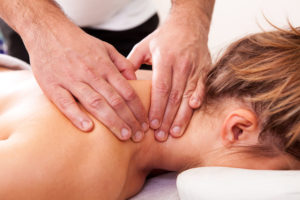 “Too much of a good thing” is a concept that we all recognize. It’s used to convey the message that virtually anything can be unhealthy in excess. That goes for chocolate, red wine, and even exercise. In all of these areas, finding a healthy balance is key.
“Too much of a good thing” is a concept that we all recognize. It’s used to convey the message that virtually anything can be unhealthy in excess. That goes for chocolate, red wine, and even exercise. In all of these areas, finding a healthy balance is key.
But what about massage therapy? Most people agree that it’s a good thing, and there is a growing body of evidence pointing toward significant health benefits. But is message therapy like red wine or chocolate, in that it’s easy (and tempting) to have too much?
These are interesting questions, and finding the right answers can enhance our understanding of massage therapy.
First, let’s take an honest look at some of the possible side effects of too much massage. Many people have had an experience where they actually felt sore after a massage therapy session – perhaps even for a day or two. Sometimes this is because the therapist used too much pressure, and did not “check in” with the patient to make sure the pressure was comfortable. In other situations, massage therapy can act like a much-needed workout, in which the body’s muscles are not accustomed to being moved and manipulated in certain ways.
Fatigue is another symptom that can present itself following a massage – again, this can be related to the deep states of relaxation achieved during massage, as well as the release of toxins from the body.
Finally, there’s the question of pre-existing medical conditions, which may be exacerbated by some types of therapeutic massage treatment. Conditions like blood clots and osteoporosis can make massage unsafe for certain individuals. That’s why it’s always a good idea to consult your doctor and make sure there are no pre-existing conditions that might preclude massage therapy.
The frequency of massage therapy (and the type of therapy) that works for you is something that you and your therapist can figure out together, because it really is different fro everyone.
First and foremost, your massage therapist should be someone you can trust. If you’re in the process of finding a new massage therapist (perhaps you’ve moved to a new area, or you’ve never tried massage therapy before), you’ll have to use the information online – as well as recommendations from friends and family – to help you make the right decision. Either way, you can’t really know whether you’re going to benefit from the treatments, or whether you’ll have a good rapport with your therapist, until you go in and try a session. There are people who receive a massage more or less every day. Provided the treatments are administered by a trained and certified professional, no health problems have been associated with daily massage.
Your own massage needs are likely to be weekly or monthly – that’s where most clients fit in. If you’re an athlete, or if you have specific therapy goals (e.g. recovering from a specific injury), it’s important to talk about a massage therapy schedule with your doctor and/or physical therapist. Finding the right balance is crucial when it comes to getting the most out of professional massage treatments.

